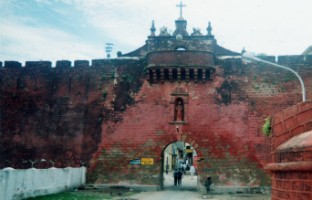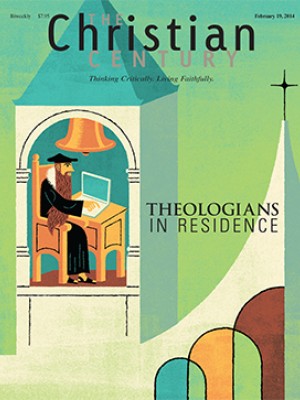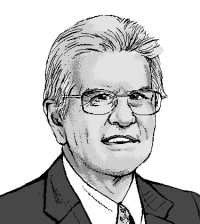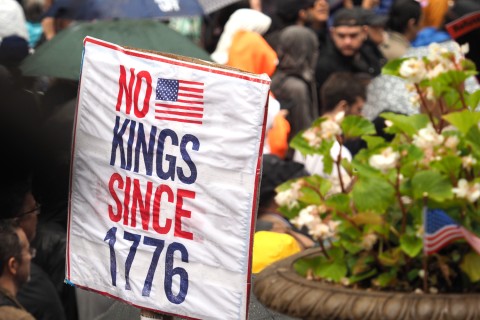The full picture of 1517

In 2017 we will mark the half-millennium of the Reformation, and already the commemorations and academic conferences are taking shape. In light of recent trends, though, it’s reasonable to ask just what we are commemorating.
Nobody doubts the significance of Martin Luther, whose historic protest in 1517 sparked a religious revolution, one of the pivotal moments of Christian history. But we are today living through a different kind of revolution. The great centers of Christian population are not the European heartland but such countries as Brazil, Mexico, Congo, Ethiopia and the Philippines. Surprisingly, that global Christian world is also marking a series of critical anniversaries that take us back to Luther’s lifetime. As we remember the Reformation over the next couple of years, we should also recall its global context.
Even in Luther’s time, the Christian world stretched far beyond the regions of Western Europe. I like to illustrate this by pointing to the decisive Battle of Diu, a naval conflict that occurred off the western coast of India in 1509. The Portuguese fleet defeated a broad alliance that included the rulers of Muslim Gujarat and Hindu Calicut, the Ottoman Empire and the Mamluk sultanate of Egypt, as well as the Christian republics of Venice and Dubrovnik. Clearly, this was a world used to globalized power struggles, not to mention cynical alliances that transcended faith and ideology.
Read our latest issue or browse back issues.
Such battles also had their potent religious dimensions. The Spanish and Portuguese framed their imperial expansion in strictly Christian terms: the church followed the flag. Victories like the one at Diu laid the foundation for new Catholic settlements in southern India, which in turn became bases for later Jesuit missions throughout South and East Asia.
It was also in this era that these empires first settled the lands that would become great Christian centers. The Portuguese claimed Brazil in 1500, the Spanish staked their claim to the Philippines in 1521. In 1508, the Portuguese established a historic alliance with Ethiopia, providing the weaponry and military assistance that allowed that old Christian kingdom to survive in its struggles against powerful Muslim neighbors.
I wish I could find some critical global event in 1517 to set alongside Luther’s acts in Wittenberg. I don’t think that’s possible. The year 1518 offers richer pickings, however. This was a year of intense activity in the newly conquered Spanish colony of Cuba, where the governor was preparing for the invasion of Mexico. At the end of that year, he gave the command to Hernán Cortés, who began his campaign some months later. However brutal the conquest and however cynical its motives, these acts mark the beginning of Christianization in Mexico and Central America.
The year 1518 was crucially important in another corner of the emerging Christian world. The most powerful kingdom in black Africa was the Kongo, which had accepted Christianity without European conquest. The ruler of the Kongo was Afonso, a pious and learned Catholic whose son Enrique entered the priesthood. In 1518, Enrique became a bishop. That marks a real milestone: surely he was the first black Catholic bishop, at least since Roman times.
We can expect plenty of books on the Reformation to come out in the next few years, and most will focus their accounts on Germany and neighboring European lands. It is startling to think that even then Christians could be found much farther afield. Bishop Enrique was a close contemporary of Luther.
By 1617, the Roman Catholic Church clearly operated on a global scale. Pope Paul V presided over a church deeply committed to expansion into Latin America and Africa, India and the Philippines, China and Japan, with all the now-familiar dilemmas of cultural confrontation and assimilation. The axis of global mission was the Spanish Empire’s maritime route between Manila and Acapulco.
Catholic polemic vaunted such globalization, pointing out the embarrassing contrast to the paltry endeavors of the struggling Protestant churches, which were largely confined to Northern Europe. Protestants ate herring; Catholics had pineapples, oranges and coconut. Not until the 18th century would Protestant missions begin to compete on a global scale.
Looking at these global events must raise questions about how we tell church history. Once upon a time, historians drew a sharp and obvious distinction between the core territories of the faith, the setting for all the key debates and political interactions, and the world of mission history. Mission history might be exciting and inspiring, but it remained an optional adjunct to the Euro-American mainstream.
Over time, though, missions become churches, and some become numerous and important in their own right. The more sense we have of a global church today, the more we need to incorporate those other regions into our central narrative. A worldwide church demands a worldwide history.







